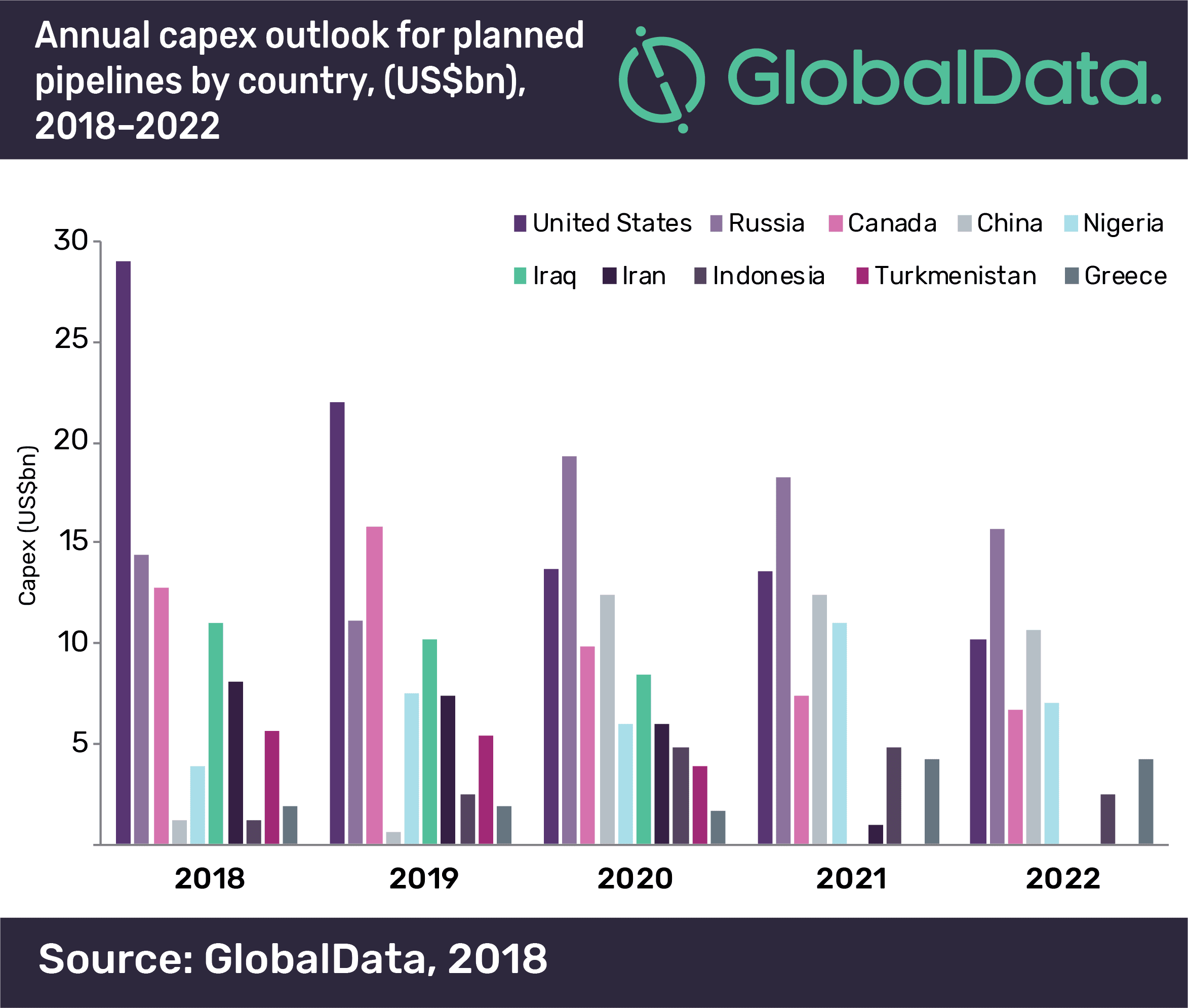The US and Russia will dominate global capital expenditure (capex) on planned major, trunk crude oil, petroleum products and natural gas pipelines during the outlook period 2018–2022, according to leading data and analytics company GlobalData. Canada, China and Nigeria will also be significant spenders on planned pipelines by 2022, considerably expanding their pipeline network.
The company’s report ‘Global Planned Pipelines Industry Outlook to 2022’, forecasts that the global planned natural gas pipeline length will grow to 153,902 kilometers (km) by 2022. Planned crude oil and petroleum product pipelines will also witness impressive growths of 36,876 km and 30,840 km respectively.
Among countries, the US and Russia are set to spend an estimated $88.4bn and $78.8bn, respectively on their new build pipelines. The length of the pipelines in the US and Russia will increase to 35,633 km and 20,680 km respectively, by 2022, should all projects be realized.

The US is the biggest spender in the global planned oil and gas pipelines industry, with natural gas pipelines accounting for around 40% of the total planned pipelines network by 2022. Crude oil and Natural Gas Liquids (NGL) are the additional major planned pipelines with 31% and 24% share respectively.
Soorya Tejomoortula, Oil & Gas Analyst at GlobalData, explains: “Booming unconventional oil and gas production is in turn driving the growth of the pipeline network in the US. More and more operators are focusing on connecting growing unconventional production with the Gulf coast for export of oil and gas.”
GlobalData identifies Russia as the second most important country in the global planned pipelines industry for spending on upcoming pipelines. The country’s spending is mostly focused on construction of natural gas pipelines, accounting for 88% of the total planned network expected to start operations by 2022. Petroleum products pipelines and Oil pipelines are the next major planned pipelines with capex share of 7% and 4% respectively.
Tejomoortula adds: “Russia is further expanding its massive natural gas pipelines network for exports. The country is building pipelines to transport natural gas from its production centers to demand centers such as China, Japan, India and Europe. ”
Additional major countries in terms of capex on planned pipelines include Canada, China, and Nigeria. The three countries are expected to account for 9.6%, 6.8%, and 6.5% respectively of the global pipeline spending by 2022.
The three longest planned pipelines in the world in the outlook period are Xinjiang–Guangdong–Zhejiang SNG in China, Russia–India pipeline, and Trans Saharan Gas pipeline in Nigeria with lengths of 8,972 km, 6,000 km, and 4,400 km respectively. All three are planned natural gas pipelines.





